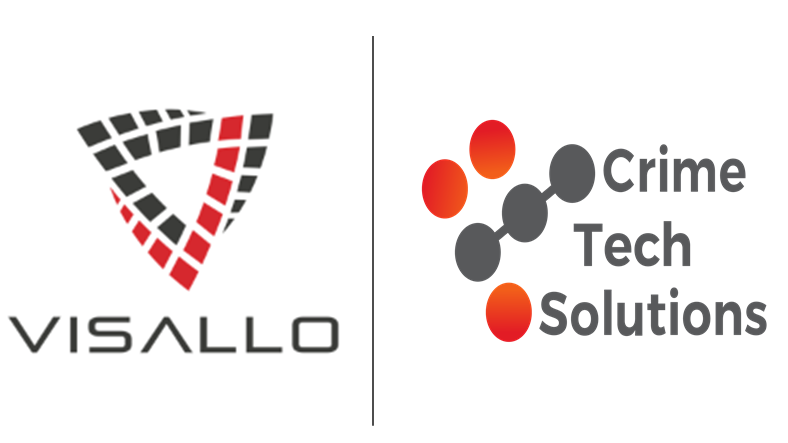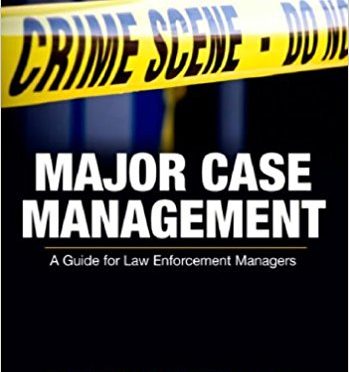Sponsored by Case Closed Software, this 25 minute video features author and former law enforcement official Daniel McDevitt as he overviews some of the best practices developed over his 40+ year career in criminal investigations.
Daniel is the author of Managing The Investigation Unit, and Major Case Management, and is recognized across the country as a leading expert in this field.
Grab a coffee, sit back, and watch the video HERE on YouTube.
Monthly Archives: October 2017
Investigative Link Analysis: Consider the Source
Posted by Tyler Wood, Operations Manager at Case Closed Software and Crime Tech Solutions
Investigative link analysis and visualization software is a powerful tool for both law enforcement agencies and the private sector investigators alike. It allows investigators to visualize the hidden, non-obvious connections that would likely otherwise go undetected. After all, we know that the human brain is much more easily able to make connections when information is presented via images rather than text.

The software does, however, need a human to tell it what to look for, and where to look for it. Information is visualized in link analysis software by importing or querying a set of data, and then organizing that data according to parameters set by an investigator. The investigator is responsible for telling the software how to organize the data, and where to gather it from.

A smart investigator will utilize multiple sources when visualizing software. The majority of the time, not all the information needed for an investigation will come from the same source.
Law Enforcement investigators may need to pull RMS data, cell phone records, case management records, and even third party data, etc, to fully understand the big picture in a scenario. By using link analysis to cross-reference these data clusters against each other, the investigator is able to see even more connections, and find even more relevant data that may be crucial in solving a case.
It is important for investigators to exhaust all their resources so they can paint the clearest picture possible. This marriage of intuition and technology ensures that no connections stay hidden from investigation.
The key, as in all of life, is considering the source.
Contact us for more information about how powerful investigation big data link analysis can help your agency today.
[contact-form][contact-field label=”Name” type=”name” required=”1″ /][contact-field label=”Email” type=”email” required=”1″ /][contact-field label=”Website” type=”url” /][contact-field label=”Comment” type=”textarea” required=”1″ /][/contact-form]
Must Read: The Rise of Big Data Policing
 Here’s an excellent, must-read article from Andrew Guthrie Ferguson, a Professor of Law at the UDC David A. Clarke School of Law and author of the book The Rise of Big Data Policing: Surveillance, Race, and the Future of Law Enforcement (NYU Press 2017).
Here’s an excellent, must-read article from Andrew Guthrie Ferguson, a Professor of Law at the UDC David A. Clarke School of Law and author of the book The Rise of Big Data Policing: Surveillance, Race, and the Future of Law Enforcement (NYU Press 2017).
“The big data policing revolution has arrived. The singular insight of this innovation is that data-driven predictive technologies can identify and forecast risk for the future. Risk identification is also the goal of this book — to forecast the potential problems of big data policing as it reshapes law enforcement.”
Read the full article HERE.
In the meantime,  Case Closed Software™ reminds you that, as the only true alternative to Palantir®, we specialize in big data investigation analytics combined with the industry’s most robust investigative case management solution.
Case Closed Software™ reminds you that, as the only true alternative to Palantir®, we specialize in big data investigation analytics combined with the industry’s most robust investigative case management solution.
We are “Palantir® without the price tag and data-lock”.
Contact us for more information below:
[contact-form][contact-field label=”Name” type=”name” required=”1″ /][contact-field label=”Email” type=”email” required=”1″ /][contact-field label=”Website” type=”url” /][contact-field label=”Comment” type=”textarea” required=”1″ /][/contact-form]
Big Data Surveillance: The Case of Policing
Posted by Douglas Wood, CEO of Case Closed Software – a leader in investigation software and analytics for law enforcement.
Headquartered here in Central Texas, I recently had an opportunity to have coffee with Dr. Sarah Brayne, Assistant Professor, Department of Sociology at The University of Texas at Austin. Ms. Brayne had just published an interesting article in The American Sociological Review. The article is titled Big Data Surveillance: The Case of Policing.
The article examines the intersection of two emerging developments: the increase in surveillance and the massive exploration of “big data.” Drawing on observations and interviews conducted within the Los Angeles Police Department, Sarah offers an empirical account of how the adoption of big data analytics does—and does not—transform police surveillance practices.
She argues that the adoption of big data analytics facilitates may amplify previous surveillance practices, and outlines the following findings:
- Discretionary assessments of risk are supplemented and quantified using risk scores.
- Data tends to be used for predictive, rather than reactive or explanatory, purposes. (Here, Crime Tech Weekly would want to differentiate between predictive analytics and investigation analytics)
- The proliferation of automatic alert systems makes it possible to systematically surveil an unprecedentedly large number of people.
- The threshold for inclusion in law enforcement databases (gang databases, criminal intelligence data, etc) is lower, now including individuals who have not had direct police contact. (Here again, Crime Tech Weekly would point out that adherence to criminal intelligence best practices vastly reduces this likelihood)
- Previously separate data systems are merged, facilitating the spread of surveillance into a wide range of institutions.
Based on these findings, Sarah develops a theoretical model of big data surveillance that can be applied to institutional domains beyond the criminal justice system. Finally, she highlights the social consequences of big data surveillance for law and social inequality.
The full PDF report can be downloaded via Sage Publishing by clicking here. Or, if you have general comments or questions and do not wish to download the full version, please feel free to contact us through the form below. Crime Tech Weekly will be happy to weigh in.
[contact-form][contact-field label=”Name” type=”name” required=”1″ /][contact-field label=”Email” type=”email” required=”1″ /][contact-field label=”Website” type=”url” /][contact-field label=”Comment” type=”textarea” required=”1″ /][/contact-form]
Data Analytics Transforms Policing
 Great article from our friends at Visallo!
Great article from our friends at Visallo!
As police find new methods of tracking and solving crime, their needs and priorities in a data analytics strategy are bound to continuously evolve.
Be sure to read the article at the popular Visallo Blog, and for more information on how Visallo and Crime Tech Solutions are changing the investigation analytics world, contact us with the form below.
[contact-form][contact-field label=”Name” type=”name” required=”1″ /][contact-field label=”Email” type=”email” required=”1″ /][contact-field label=”Website” type=”url” /][contact-field label=”Comment” type=”textarea” required=”1″ /][/contact-form]

